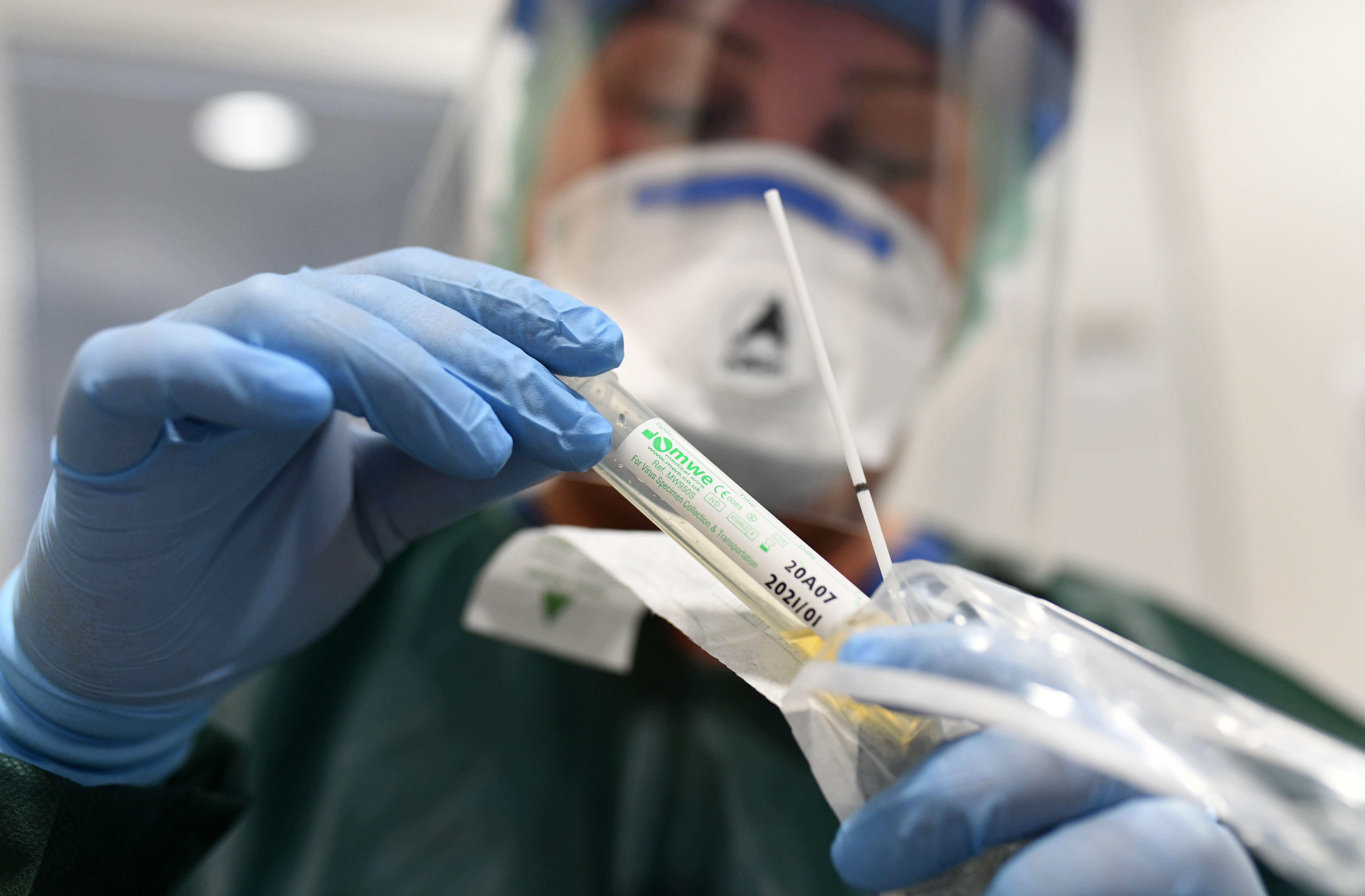The University of Washington’s Institute for Health Metrics and Evaluation (IHME) has updated its coronavirus forecasting model, and predicts 20,000 fewer people will die of the virus in the U.S. through August.
The IHME’s Sunday prediction estimated that 81,766 people would’ve died of the coronavirus in the U.S. by August 4. The Tuesday update predicts fewer people will die than predicted days ago, with total deaths projected to be 60,415. (RELATED: Updated Estimates Predict Decreased Need For Hospital Beds, Ventilators At Pandemic’s Peak)
The changes in the predictions are due to “a massive infusion of new data,” the organization’s director said in a press release, according to Yahoo. IHME is one of the country’s leading coronavirus forecasting models and has been used by the White House to chart the pandemic.

Nurse Canan Emcan shows a test kit for coronavirus samples at the isolation ward of the Uniklinikum Essen university hospital in Essen, western Germany. (Photo by INA FASSBENDER/AFP via Getty Images)
The model’s April forecasts have progressively moved downward in the number of predicted deaths through August. The April 2 update predicted a total of 93,531 deaths, over 30,000 more deaths than the Tuesday update.
The estimated peak date for hospital resource use has also been predicted to arrive 4 days sooner. In the April 5 report, the predicted peak date for demand for hospital beds, ICU beds and ventilators was April 15, but was expected to be April 11 according to the Tuesday update. The number of ICU beds predicted to be needed on the peak date dropped from 29,210 to 19,438, while total beds needed was reduced from 140,823 to 94,249. The April 2 forecast predicted over 167,000 more total beds would be needed than the updated number.
The estimates assume that social distancing measures are continuing in states where they’ve been enacted, while the estimates for states without social distancing measures yet assume that they will have them within seven days.












